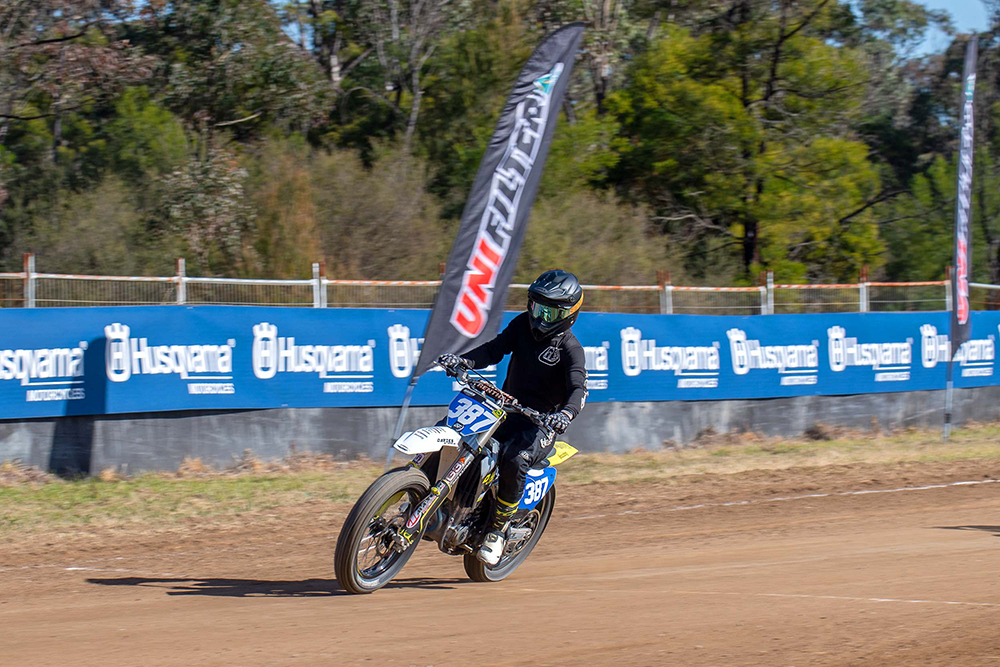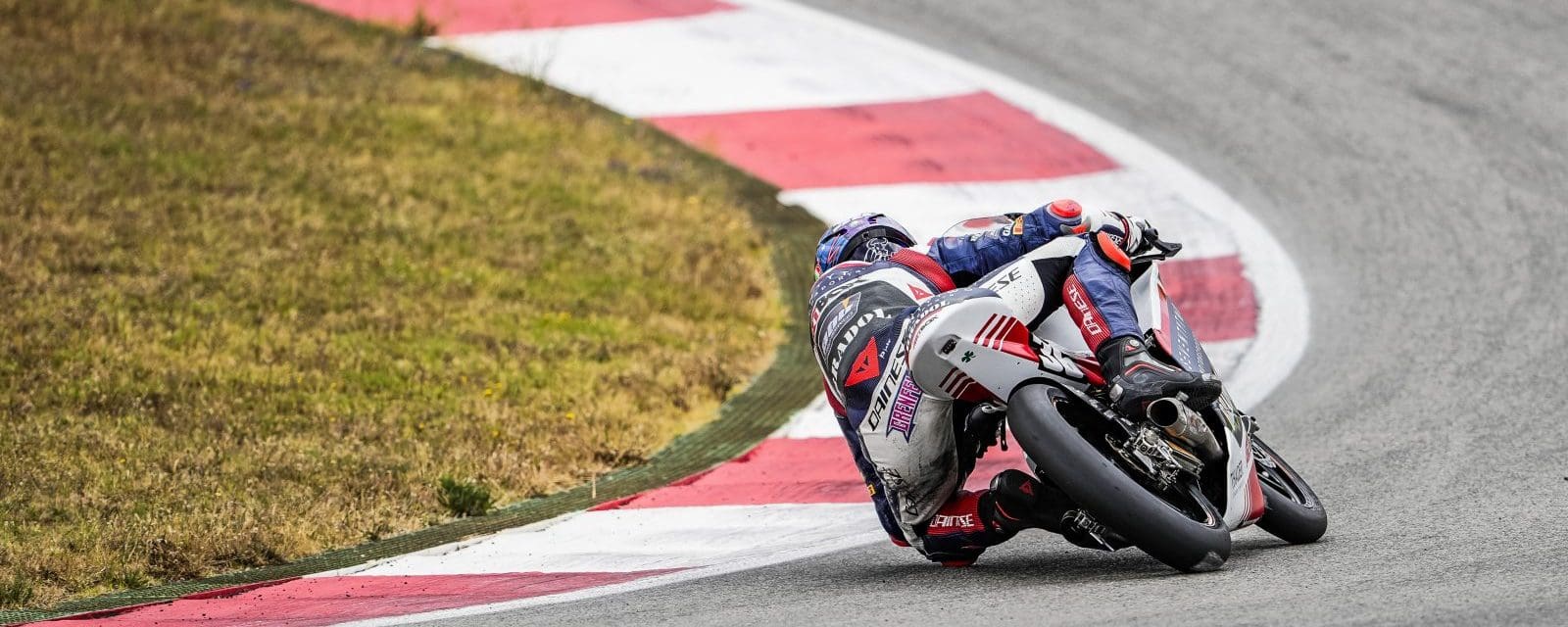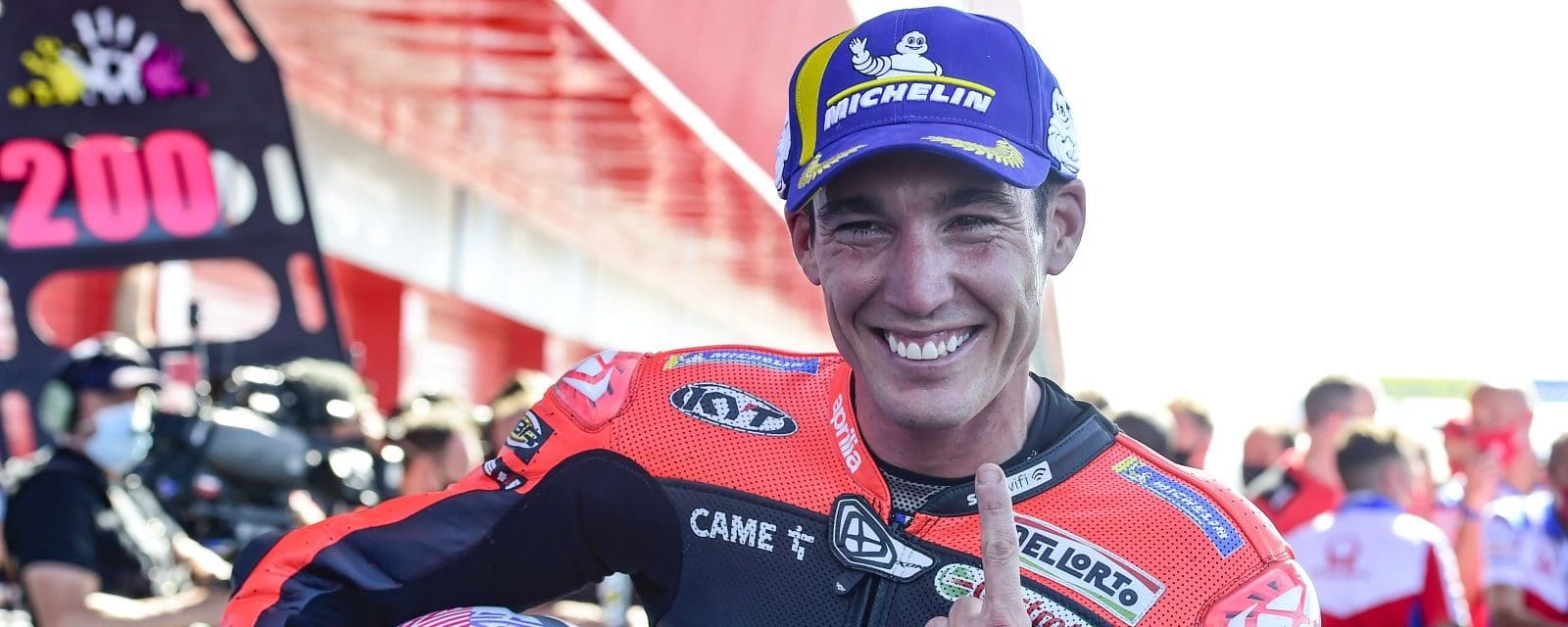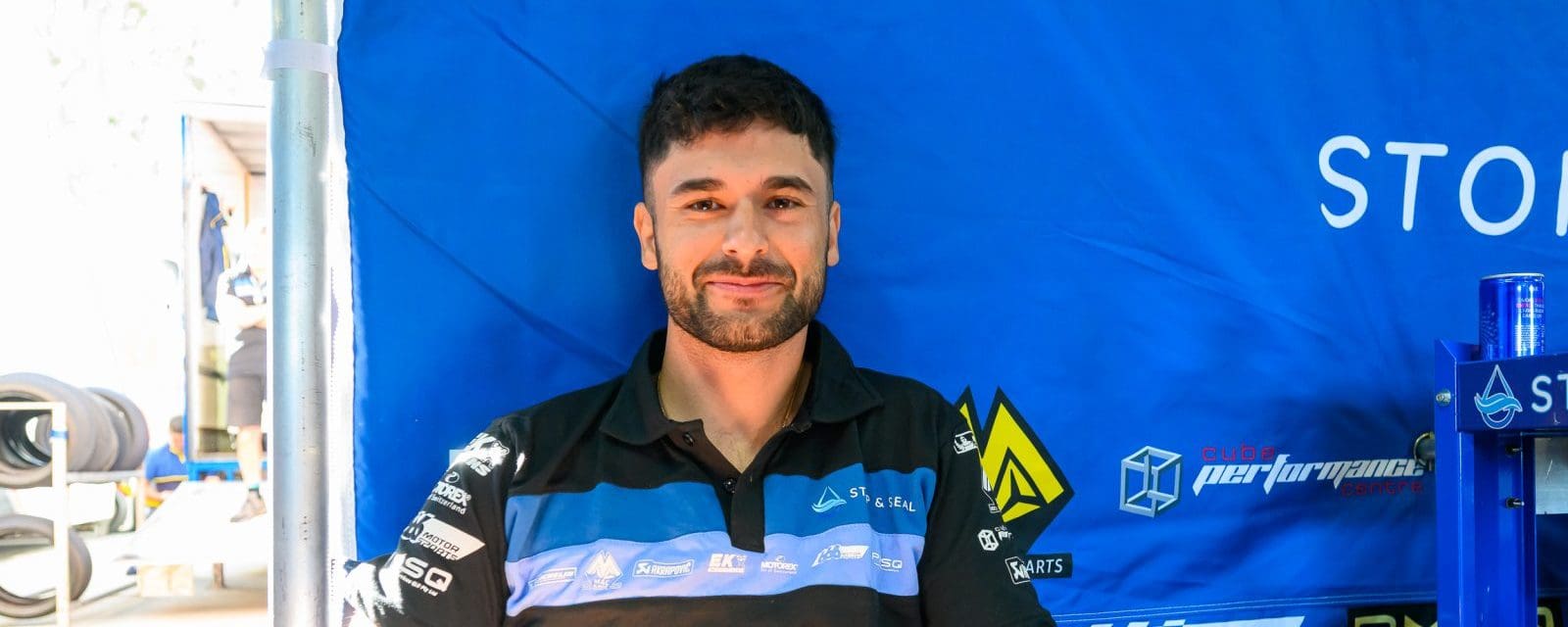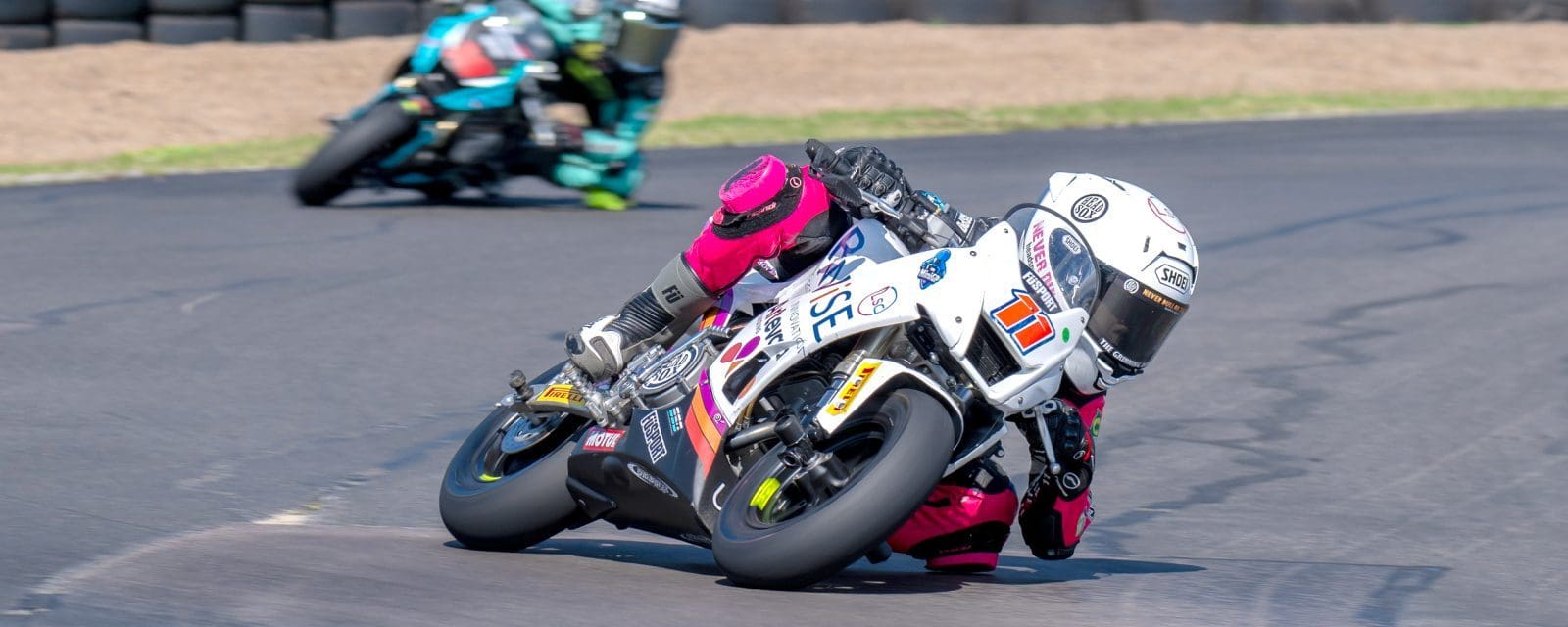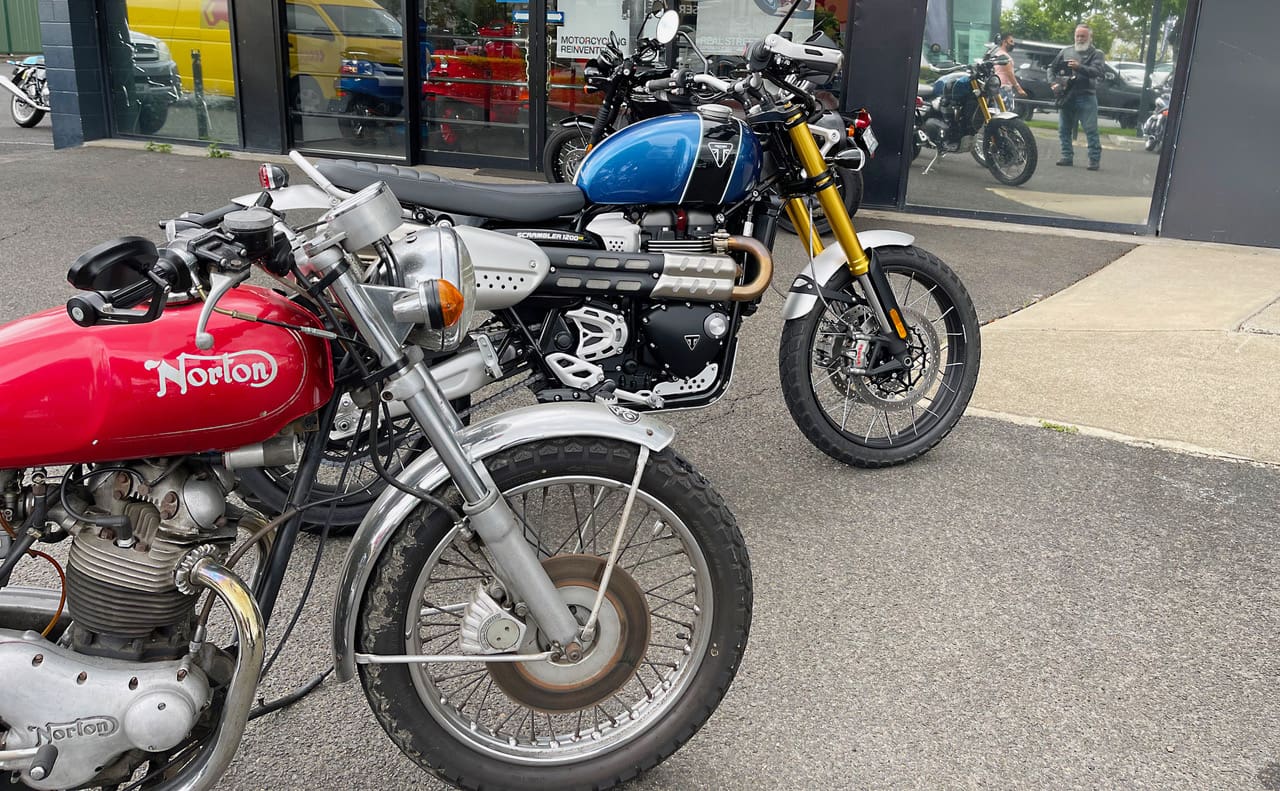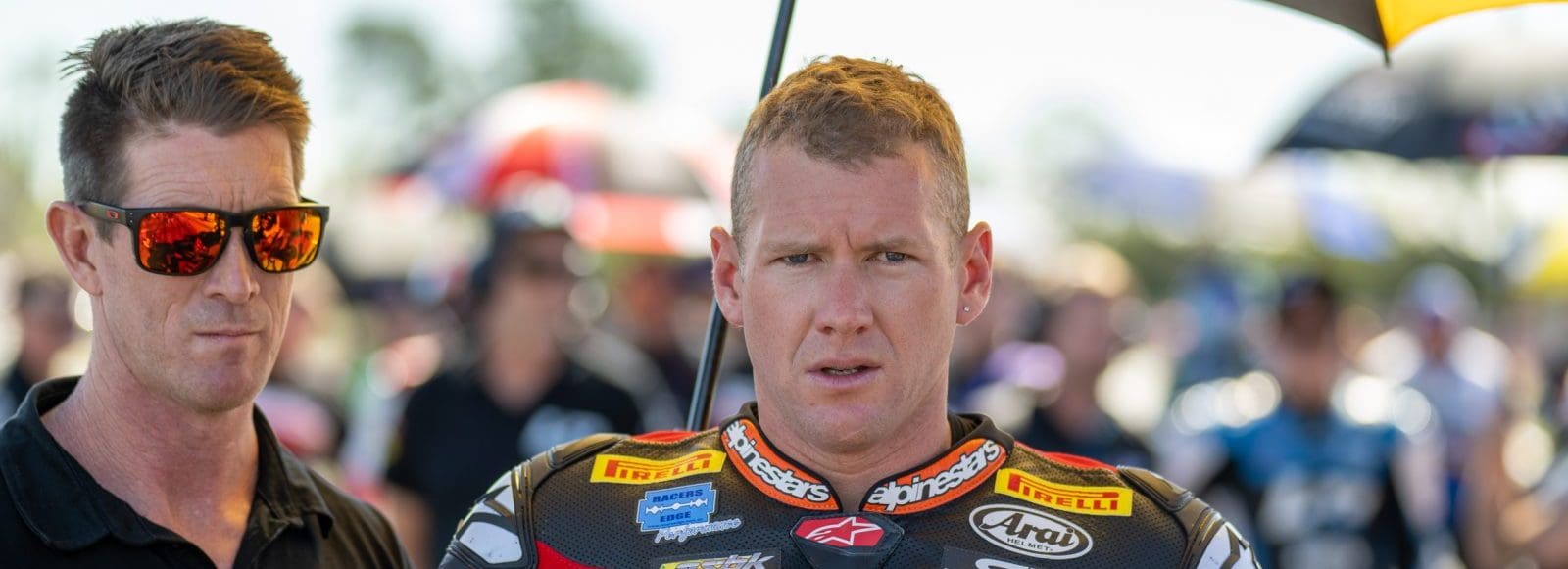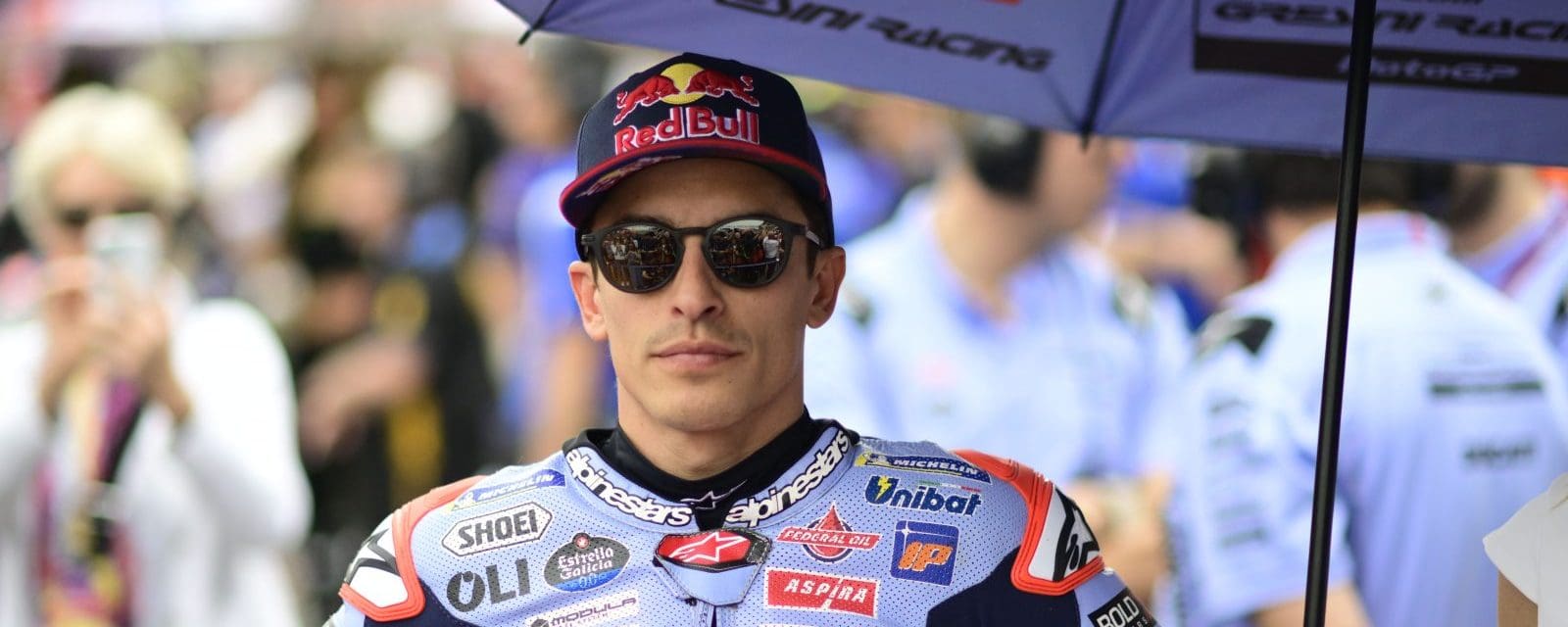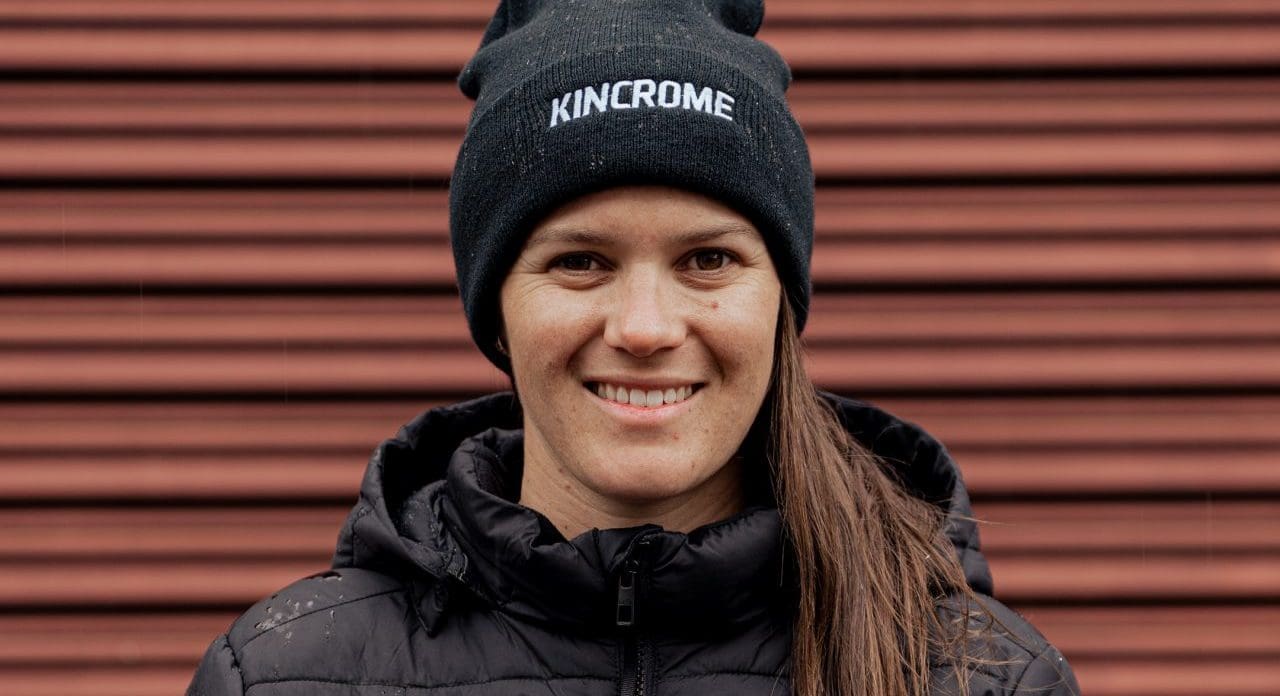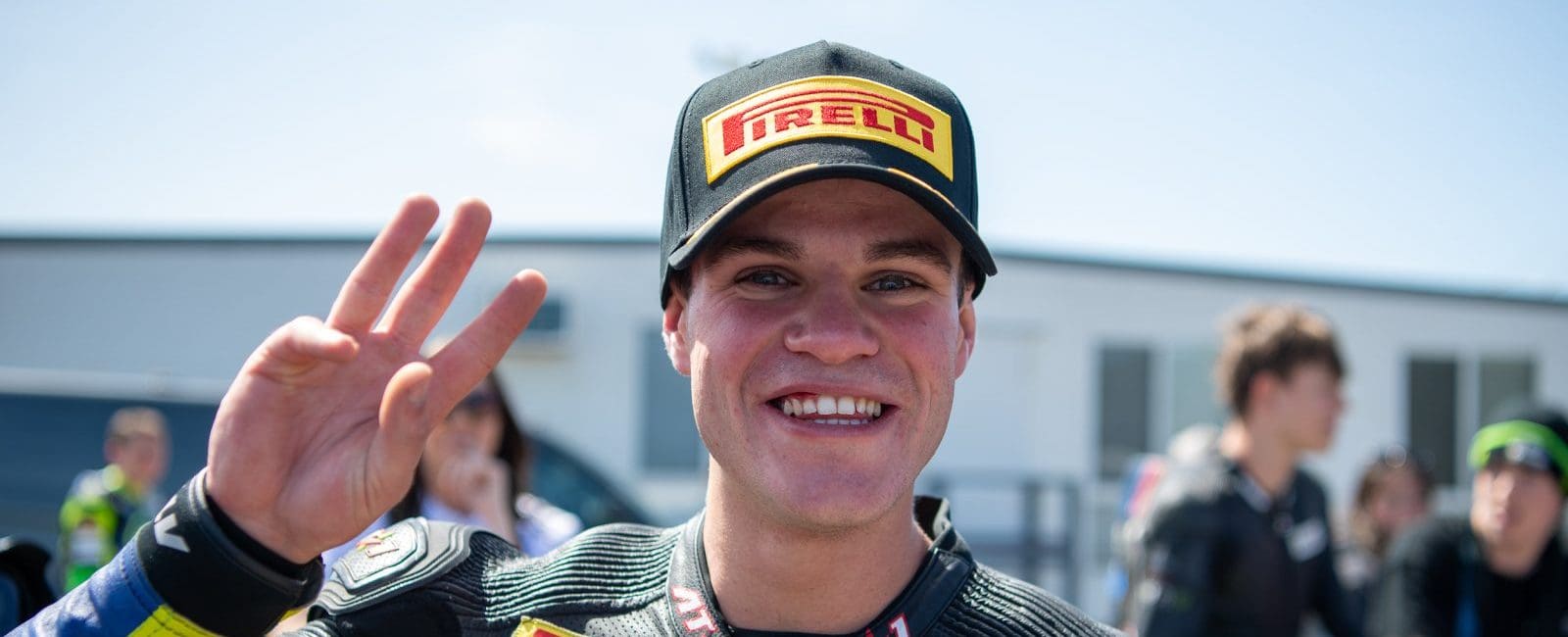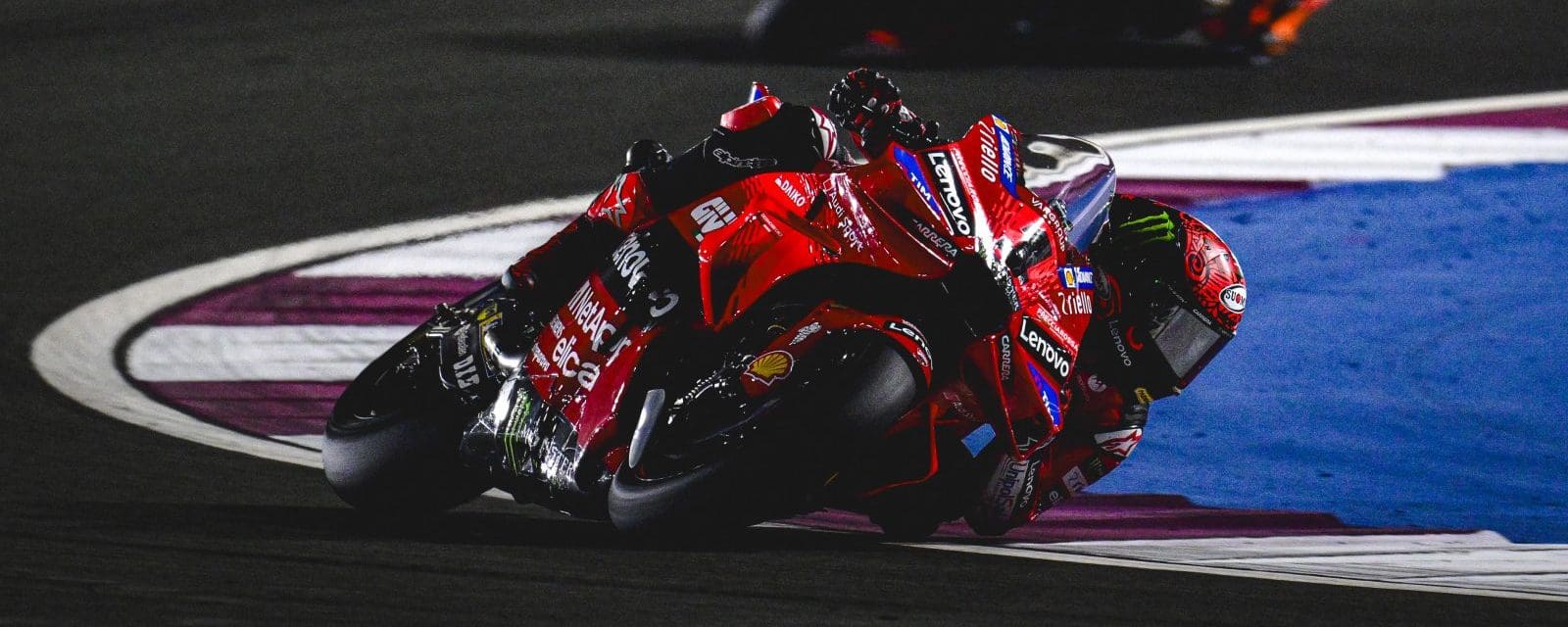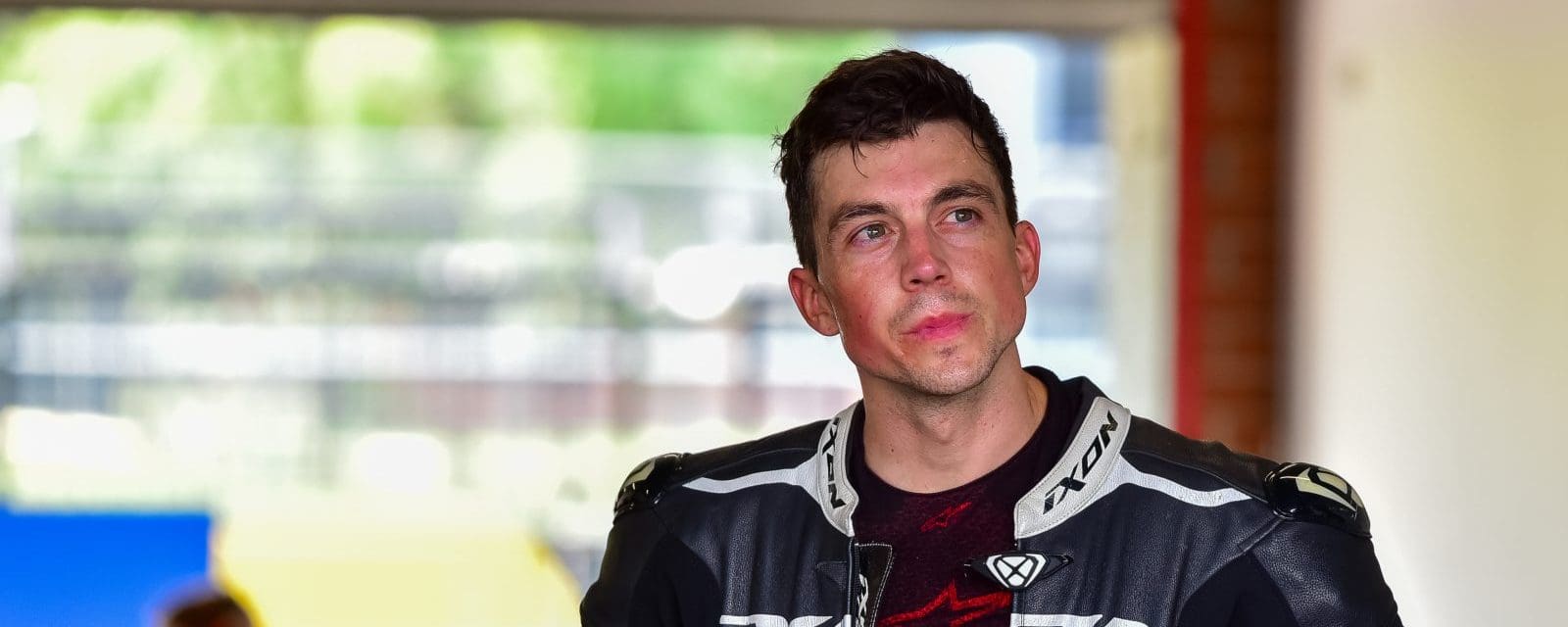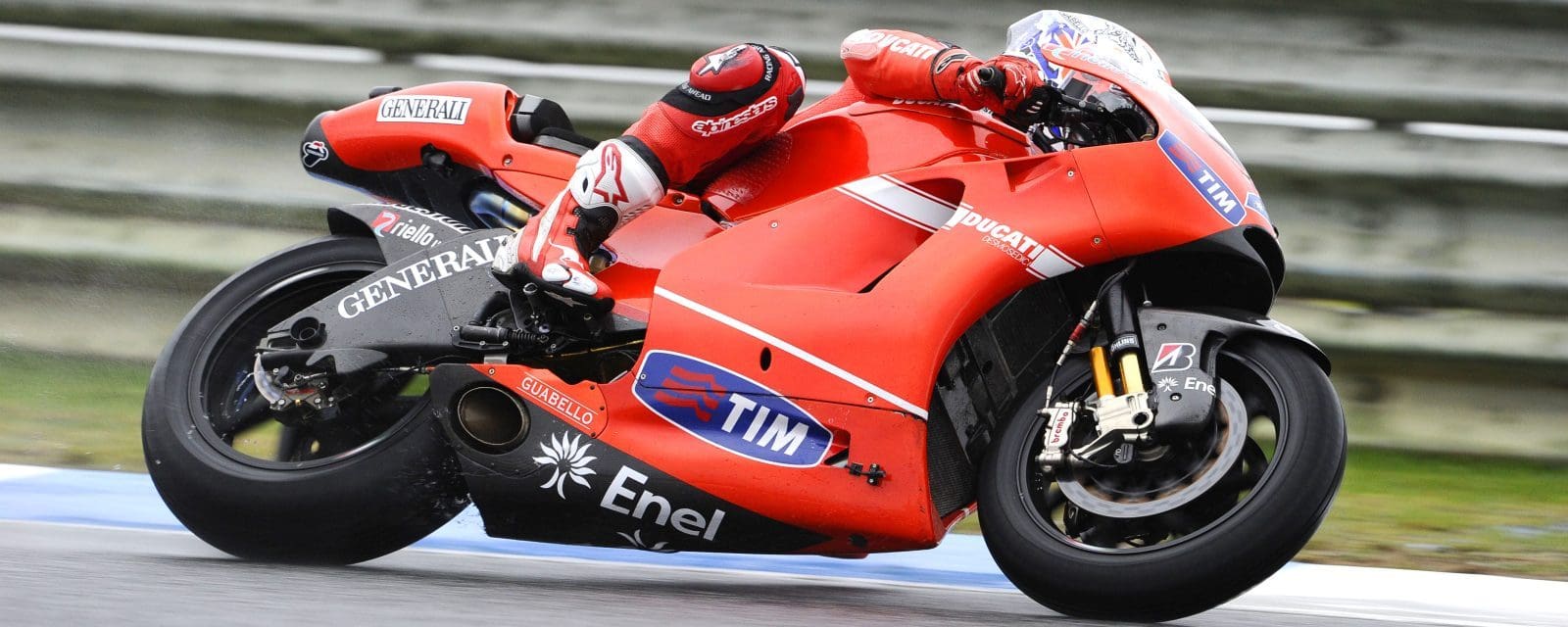Before the first round of the Aussie Flat Track Nationals (AFTN) last October, I hadn’t raced for a couple of years. The main reason I race AFTN is because I believe in the 19-inch wheel format and all the opportunities it brings. The sort of tyres we’re running at AFTN is the best thing we can do in this country for the sport of dirt track. Forever we’ve been the feeder to road racing or speedway, but it feels like all that has fallen by the wayside a little bit these days.
Right now, there’s a genuine opportunity for kids to grow up and become paid, professional dirt-track riders. The weekend before AFTN, the American Flat Track series visited Lima and Max Whale and Tom Drane were on the front row of the heat race. They are paid professional riders. It leaves me feeling that the guys in this country that are calling the shots at a higher level still can’t see the forest for the trees. It’s not only the opportunity to race overseas, but from a cost perspective, ‘19s’ make perfect sense. A Michelin trials tyre we would normally use is worth about $350; at an Australian title round you would need at least two of them, so there’s $700 in rear tyres alone. I could have used the same rear tyre at the Appin AFTN round for the whole weekend.
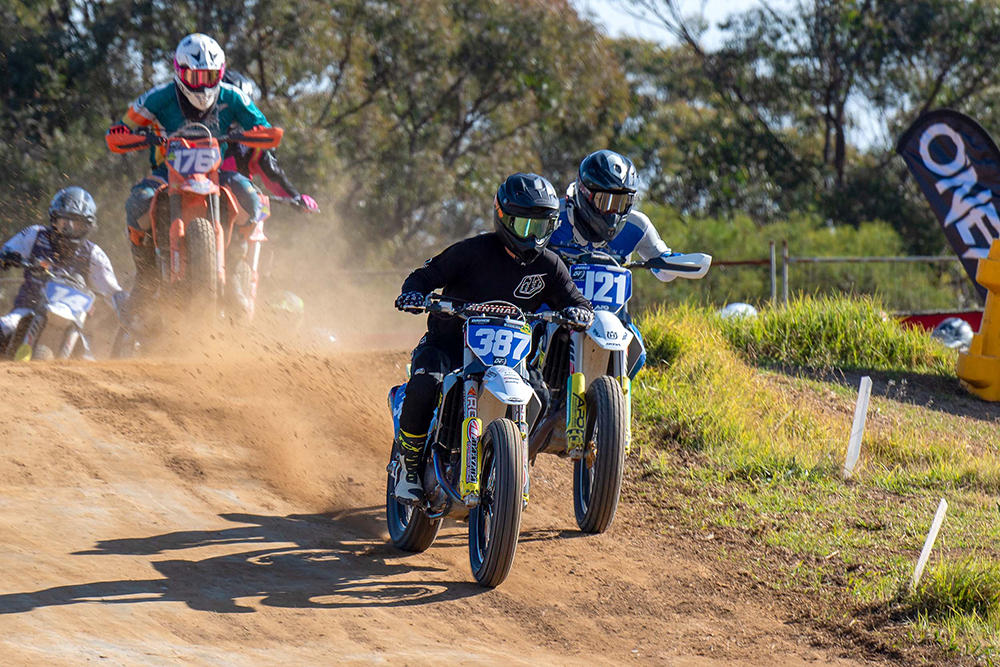
There is an argument that our current dirt-track setup is faster. When riding at Bathurst I know Jarred (Brook) was half a second per lap faster on trials tyres versus 19s. No spectator in the stands watching the race is going to be able to notice that half a second per lap. If the racing is good, then the racing is good. It doesn’t matter if you’re able to do a faster lap on a different tyre. The cost of dirt track now, with the ultimate amount of grip you have on an oil track with a big 165 or 170 [section] rear… all the power you can use goes to the ground. Long track is the same.
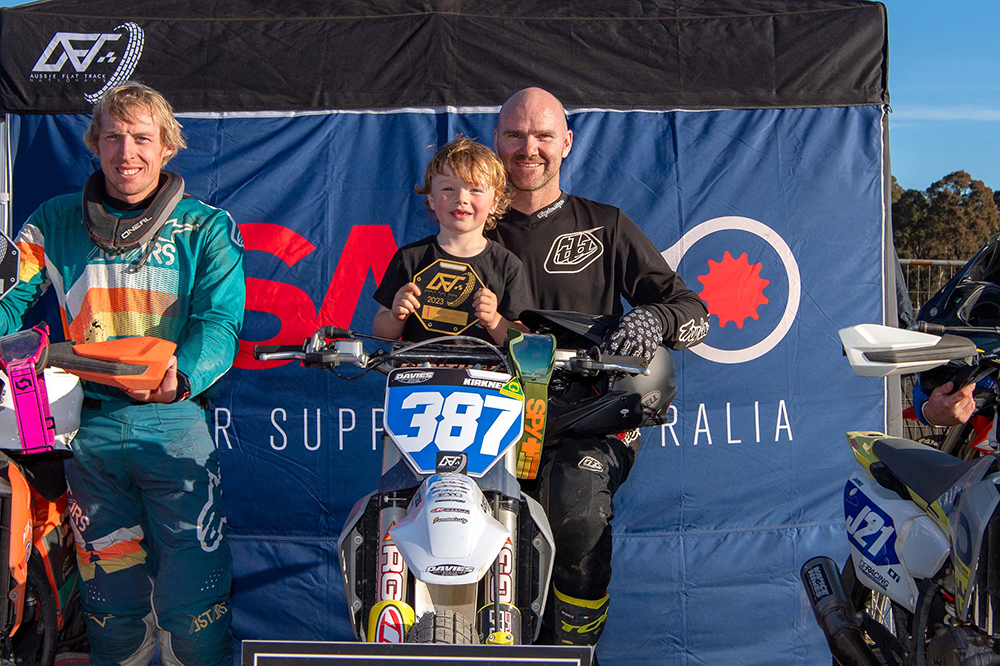
With the 19-inch wheel that is used at AFTN, you don’t need a methanol fire-breathing 70hp 450. There simply isn’t enough grip available from the tyre. The Husqvarna I rode at Appin had a stock standard engine – it had an ignition and an exhaust and that was it. To turn up with that bike at an oil track or at a big, loose dirt track against a well-tuned machine running a trials tyre, it just wouldn’t be competitive. It would literally be like bringing a knife to a gunfight.
The trade-off is cost. Running 19-inch wheels (with less traction) keeps the racing much more affordable while maintaining the spectacle. It also means less track preparation is needed. There are so many pros and I can’t see any cons.
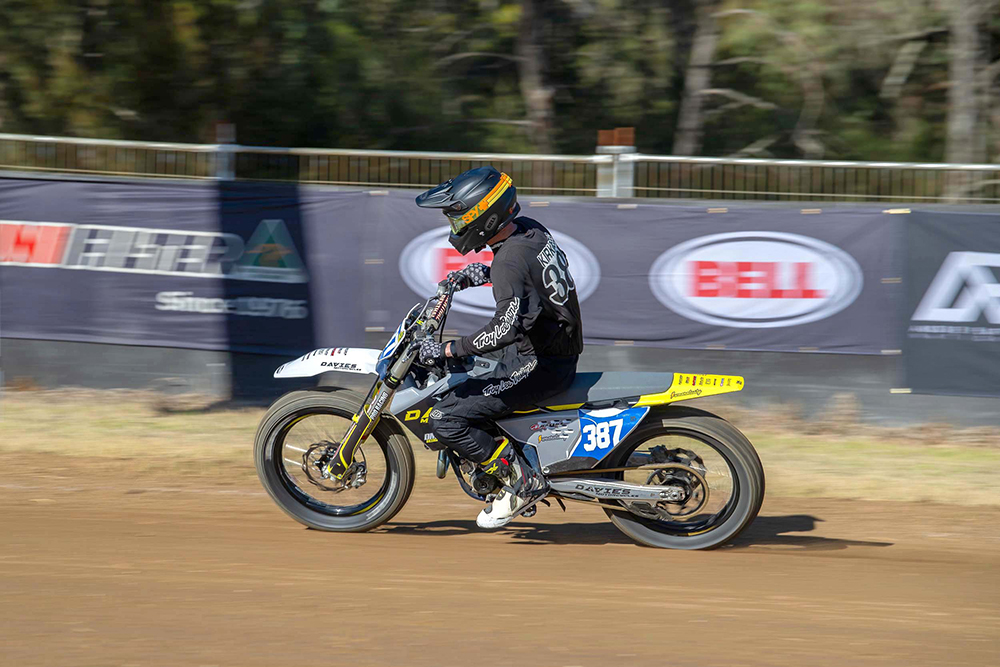
There was some suggestion after the initial AFTN round at Appin last year that I was just lucky. Hopefully the results from last weekend show it was no fluke. The key to lap times on a dirt-track is keeping it smooth. When the groove is coming in you need to keep your wheels in line. You might be able to do one incredible lap hanging it out and getting loose, but 10 or 15 in a row is almost impossible. Later in the day when there is heaps of grip on the track you can get after it more.
I also loved the TT course being used on the second day. I actually prefer it and it gives us all the chance to show off a more complete skill set. We go to North Brisbane next month and it may be a different story up there.
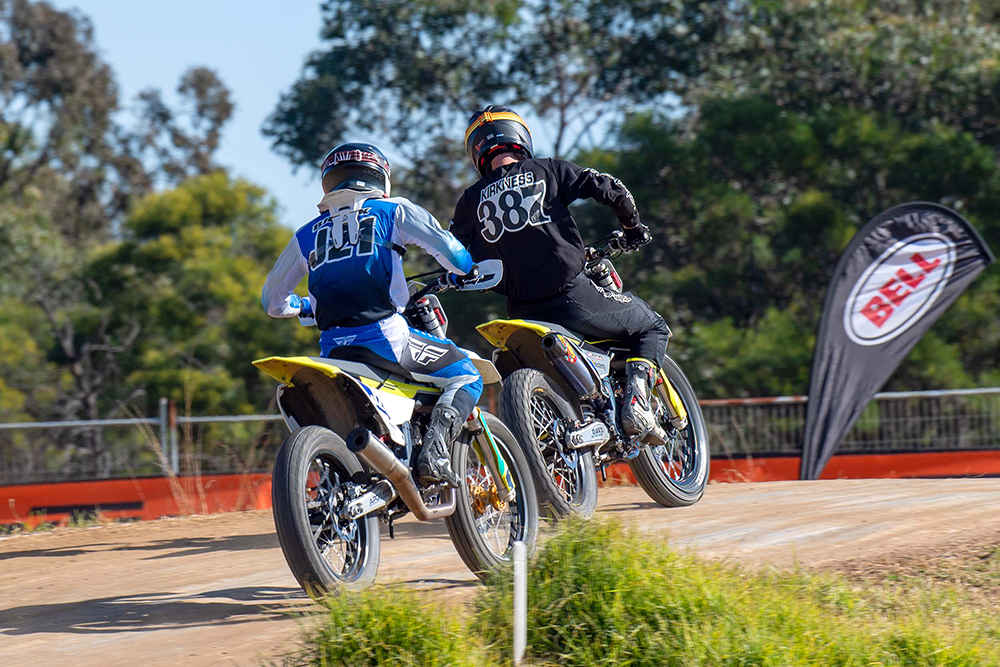
The coolest part of racing now for me is that my little boy is old enough to see that his old man is half alright at riding a motorbike every now and then. I do get a kick out of racing with the young guys though – you can get in there and have a clean battle and it’s safe. I don’t want to go busting myself up at this age. More than anything, I want to pass on as much information as I can to help the next generation. I want to see the young guys have bright futures and go international if they get the chance.
